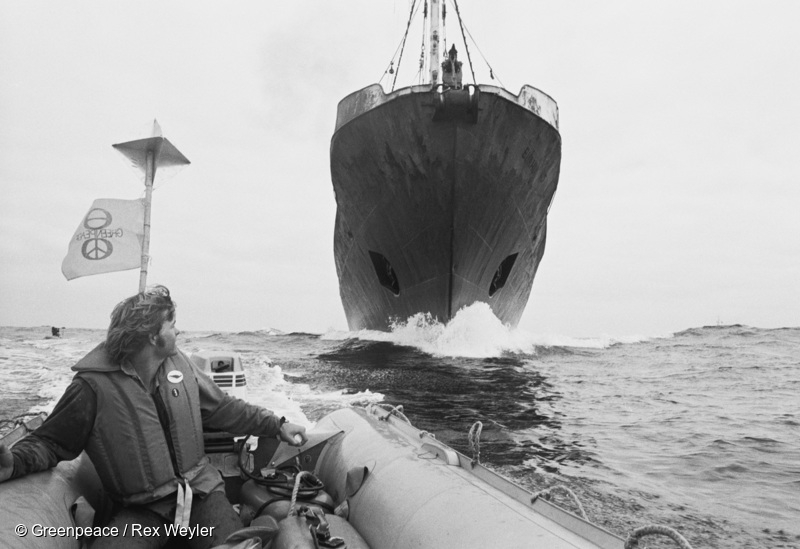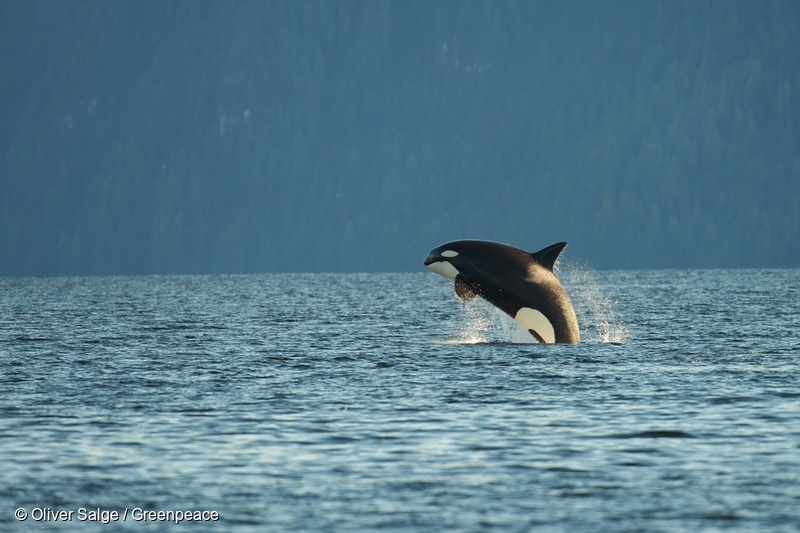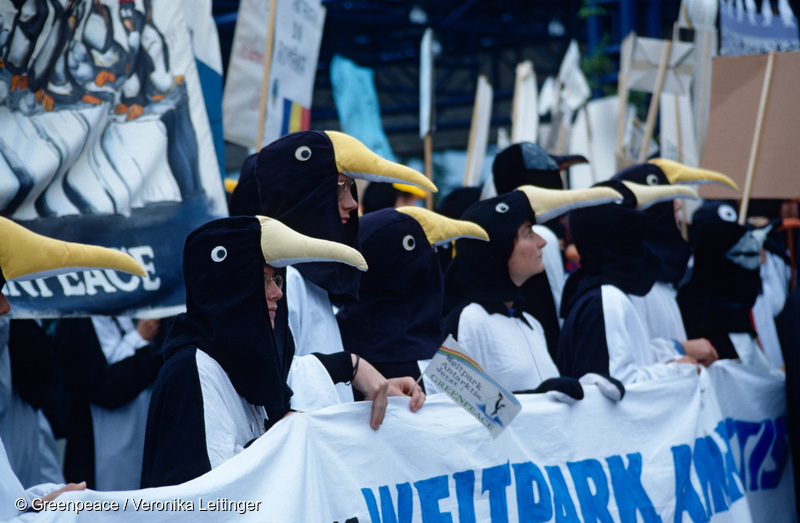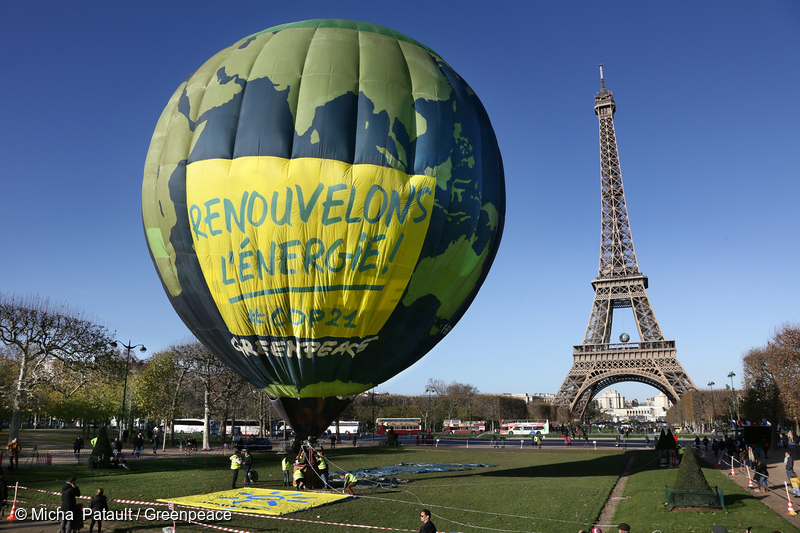
Saving ocean ecology starts with the whales
Have you ever heard the beauty of a whale’s song? These giants of the deep used to be hunted around the world – last century 3 million were slaughtered and many species were driven to the edge of extinction. We are part of a movement that stopped that from happening. Let’s take a trip back to 1975…
That was the year we made our first Save the Whale action, which was in the North Pacific Ocean and against Soviet whaling ships. We campaigned every year until 1982 when the International Whaling Commission (IWC) placed a moratorium on commercial whaling. Respite from the harpoons meant the whales had a chance to recover their numbers.

In the intervening 30 years, most countries stopped whaling, but a few – they pretend their catch is scientific whaling – continue to slaughter these beautiful animals. To stop this, last year a number of IWC members – Brazil, Uruguay, Argentina and South Africa – proposed setting up a South Atlantic Whale Sanctuary.
Sadly, the IWC rejected this proposal, but we will continue to fight for marine sanctuaries. Graceful, intelligent and a crucial part of ocean ecology, whales deserve to be saved. I know you are on board!

Saving the South Pole
The Antarctic helps balance our climate and is home to a rich biodiversity including many types of penguins and seabirds. But just like the Arctic, the Antarctic is faced with threats from governments and corporate greed.
Countries have always coveted the Antarctic’s rich resources, squabbling with each over who has rights to what. The Antarctic Treaty, signed in 1959, was intended to preserve the continent for peaceful, scientific purposes. But it wasn’t enough.
When countries started fighting for mining rights in the 1980s, Greenpeace kicked into action. We set up a base at the South Pole and at the end of the seven-year campaign, we had graduated to being a respected player in negotiations for the future of the continent. In 1991, the Antarctic Environmental Protocol was signed, effectively banning all mineral exploitation.
Exactly 25 years later, in October 2016, the largest marine protected area in the world was created in the Ross Sea, off the coast of Antarctica. Greenpeace and millions of people around the world had campaigned for years for this protection, and our victory was marvellous! Known as the “Last Ocean”, the sanctuary will cover more than 1,555,000km2 (or about 43 Taiwan’s!)
Our ultimate goal is to get 40% of our world’s oceans to be designated fully-protected sanctuaries, to safeguard our oceans, marine ecosystems, and seafood resources that people around the world depend upon.
Saving the climate
Greenpeace has been an active observer at climate talks since the 1980s. We are committed to finding a lasting legally-binding climate deal for the planet. In that time, we have become experts on the political wrangling and the finer details of negotiations and we lobby non-stop both inside and outside the meeting room.
Let’s wind back to 1997. That was the year the United Nations (UN) oversaw the world’s first climate treaty – the Kyoto Protocol. After more than a decade of hard campaigning it was a great win and a key milestone for Greenpeace and other environmental organizations. Countries who signed up agreed for the first time to set emission reduction targets.
Almost 18 years later, with Greenpeace lobbying hard, 190 countries passed the Paris Agreement with the stated aim to prevent average global temperatures rising above 1.5°C above pre-industrial levels and an end goal of zero emissions by the turn of the century.

On June 1, 2017, President Trump officially announced he will try to pull the United States out of the Paris Climate Agreement, but that doesn’t mean the end of climate action. Greenpeace has strong science-based solutions for saving the climate from quitting coal, developing renewables to improving energy efficiency. We have teams all around the world, campaigning and helping countries to do everything they can, so that we can save the climate together.
